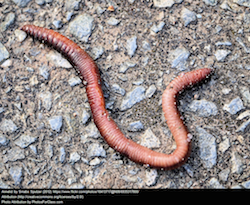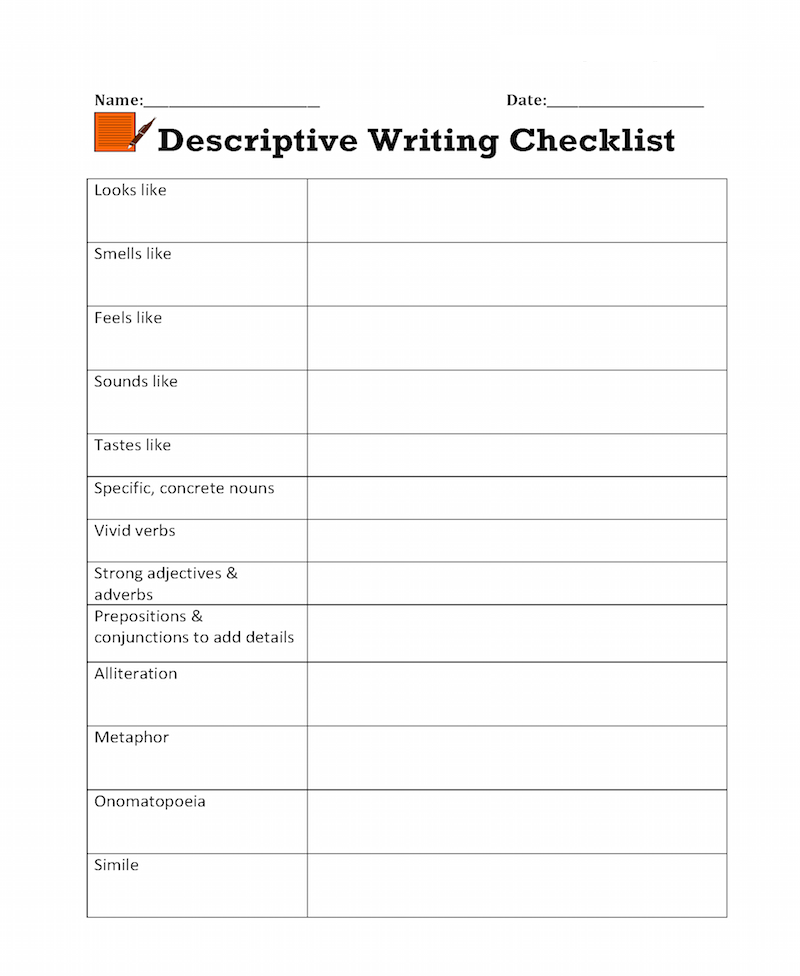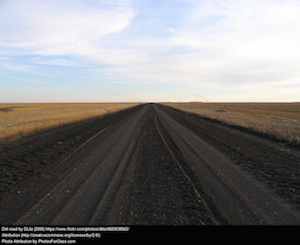1.10 Get Descriptive - Part One
| Site: | Cowichan Valley School District - Moodle |
| Course: | ELA5, CSS, Sferrazza |
| Book: | 1.10 Get Descriptive - Part One |
| Printed by: | Guest user |
| Date: | Monday, 29 December 2025, 6:59 PM |
Learning Targets
By the end of this lesson, you should be able to say YES to the following questions.
- Can I identify descriptive language when I read or hear it?
- Can I identify and create parts of speech and literary devices that help make writing descriptive?
- Can I find joy and entertainment in reading and listening to descriptive writing?

Different Kinds of Writing
Read these writing samples. Which one is descriptive writing?
 Sample A
Sample A
Earthworms can be found all over North America, but they are not an indigenous species. Europeans brought plants from their home countries and worms came along for the trip. They spread prolifically across the continent, except for desert and permafrost regions.
Sample B
The earthworm looked like a long pink mustache that had come to life. The creature squiggled and wiggled vigorously across the huge stretch of grey pavement. Grains of sand stuck its body and its slimy skin became more like crusty bread. Silently, it slunk into the sanctuary of the grassy lawn.
Sample C
Earthworms are invaders from Europe and we should ban them from Canada. People should act now by digging up worms in their backyard and using them as fishing bait as soon as possible. If we all take action, we can solve this serious invasion that impacts the lives of nearly every Canadian.
Sample D
Eartha, the Earthworm, squiggled as fast as she could across the Pavement Desert. It was a dangerous journey. Crows could fly down and attack her from the trees at any moment. Eartha sighed with relief as she finally reached the safety of the Grass Jungle. She would live another day.
And the Winner Is...
 Sample A
Sample A
This is expository writing. It explains or informs the reader. You find this kind of writing in textbooks. When you are doing descriptive writing, it can be helpful to research the subject you are describing. Seeing photos and reading detailed information can help hone your description. Make sure to focus on using your five senses when you do descriptive writing. If it starts sounding like a research paper then you are doing expository writing.
Sample B
Yes! You picked a winner! This is writing that describes the worm. There are literary devices like similes and alliteration. There are strong verbs and adverbs. The writing helps you visualize the worm.
Sample C
This is persuasive writing. It’s used to convince someone or encourage them to take action. Sometimes descriptive writing is used in persuasive writing to help paint a picture in your mind -- in hopes of bringing you over to the author’s point of view.
Sample D
This is narrative writing which you will be doing in the following unit. Narrative writing tells a story. There is some overlap because descriptive words are found in narrative writing. In this unit, the focus will be on your describing skills – not creating a plot or story.
As you can see, there are many kinds of writing. Make sure you stay focused on descriptive writing for this unit.
Descriptive Writing Checklist
Use the following checklist to help you read, listen to, and write descriptive writing.
 |
Listening to Descriptive Writing
Listen to the audio below and then go to your Descriptive Writing Journal and do "Journal #8: Picture the Words". Be sure to return to this lesson when you are done!
Reading Descriptive Writing
Read this excerpt from a book titled Something Suspicious in Saskatchewan by Dayle Campbell Gaetz.
|
Katie pushed damp curls back from her forehead with hot sweaty fingers. She leaned sideways to peer past GJ's right ear. That straight dirt road still shot out in front of the truck as bland and boring as ever. It stretched endlessly across this dreary land until, in the distance, its two edges grew so close they seemed to touch. On both sides of the road were fields. Rocky fields, bumpy fields, green fields, brown fields, they stretched in all directions to a flat and featureless horizon. In a place like this, a truck might drive right off the edge of the earth and vanish forever. Worse than the flatness, though, was the heat. And dust. And mosquitoes. |
 |
What senses are involved in this description? Identify parts of speech and literary devices the author uses in this description. How do you think Katie feels about Saskatchewan? How do you know this?
In your Descriptive Writing Journal, complete "Journal #9 Reading Analysis".